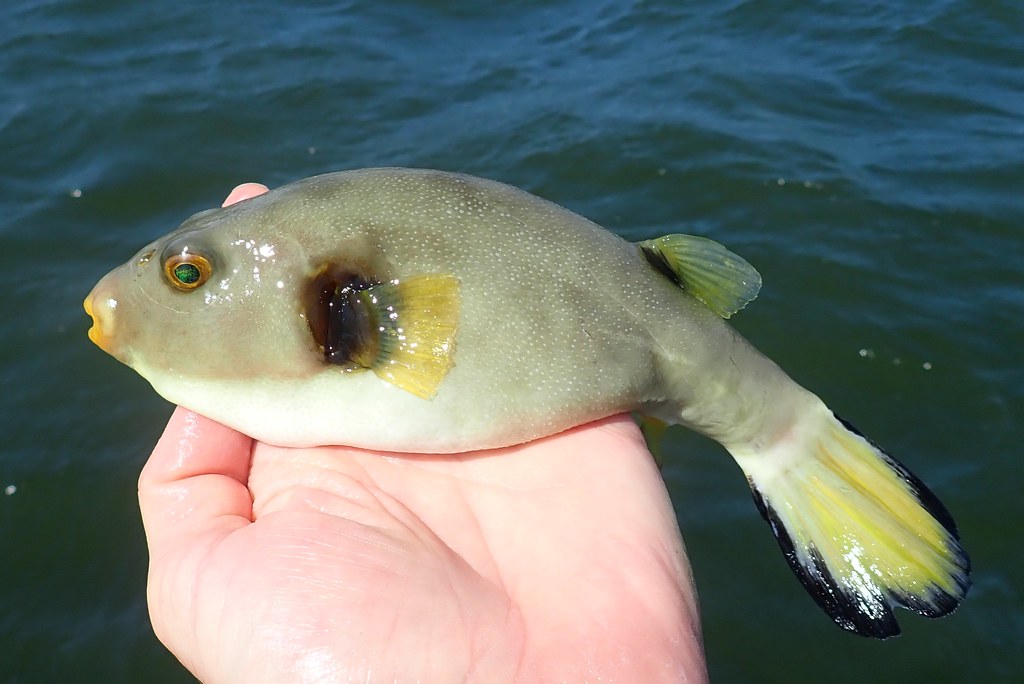It was too windy to go offshore our second day in Durban, so we had no choice but to fish the harbor again. The new species count wouldn't be as high as the day before, but we each missed out on a few that the others caught, so it was a chance to fill in those gaps. We started off at the harbor mouth to fish the moving tide. I quickly caught a new species, the Natal pandora, and it didn't take long for us us to realize we were parked right over a school of them! We joked that we had opened Pandora's Box, and we actually had to move spots because we got so tired of catching them.
Natal Pandora (Pagellus natalensis) - new hook & line species #590
Next we headed to the back of the harbor downstream of several small urban rivers. Here the water was opaque from all the stirred up sediment. It wasn't pretty, but different habitat often means different species. We fished our usual sabikis but also had a few rods out with baits on the bottom.
We caught a lot of diversity at this spot, but unfortunately it was mostly stuff we had caught the day before. My only new species here was the javelin grunter. I don't think we caught anything significant on the rods with baits on the bottom.
Common Ponyfish (Leiognathus equulus)
Spotted Grunter (Pomadasys commersonnii)
Orangemouth Anchovy (Thryssa vitrirostris)
Cape Stumpnose (Rhabdosargus holubi)
Cape White Seabream (Diplodus capensis)
Javelin Grunter (Pomadasys kaakan) - new hook & line species #591
Around noon we moved again. The tide was coming back in, and TK wanted us to fish a drop-off next to a shallow sandbar. You can see the color change in the water as well as a big piece of driftwood on the sandbar.
The action here was especially slow. It took us about an hour to get our first bites, but when we did we found some of our hooks missing. When we had a few hooks come back with the points clipped off, we knew who the culprits were... puffers! With a little patience and luck we each pulled up immaculate puffers. Most of them stayed deflated, but one of mine came up fully inflated for a good puffer photo.
Immaculate Puffer (Arothron immaculatus) - new hook & line species #592
Here's what a typical deflated individual looked like.
We also had a small school of mojarras move through, and I was able to catch one. It's a little hard to tell from this photo, but they had long first dorsal rays.
Whipfin Silver-Biddy (Gerres filamentosus) - new hook & line species #593
We finished up the day in the part of the harbor where we drifted the day before. The wind had the boat moving pretty quickly, so we had to use heavier sinkers to reach bottom. On one of my drops I was baffled why I wasn't hitting bottom. I closed the bail on my reel and started reeling in slack line. When the line tightened up it was pointing 90 degrees to the right! I fought a crazed fish which turned out to be a torpedo scad, a species built purely for speed. The next fish was my first bluefish, another species built for speed. It's funny that these are a common catch off the east coast of the U.S., but I had to go to Africa to catch my first one.
Torpedo Scad (Megalaspis cordyla) - new hook & line species #594
Bluefish (Pomatomus saltatrix) - new hook & line species #595
This was a long day of fishing, and the heat finally caught up to me. I remember the other guys kept fishing, but I decided to stop early and try to find some shade so I could cool down. The shade was nonexistent, but I sat on a bench and sipped water for the last hour. I passed the time by watching the harbor traffic. Several tugboats hurried out to the mouth to meet an incoming ship.
The size of some of the container ships was astounding. I have another good photo of this ship completely in frame, but I like this one of Ken and I looking on as one of the tugs gets into position.
TK told us the weather forecast for the next day looked good. We were ready for offshore fishing!
















No comments:
Post a Comment
Note: Only a member of this blog may post a comment.